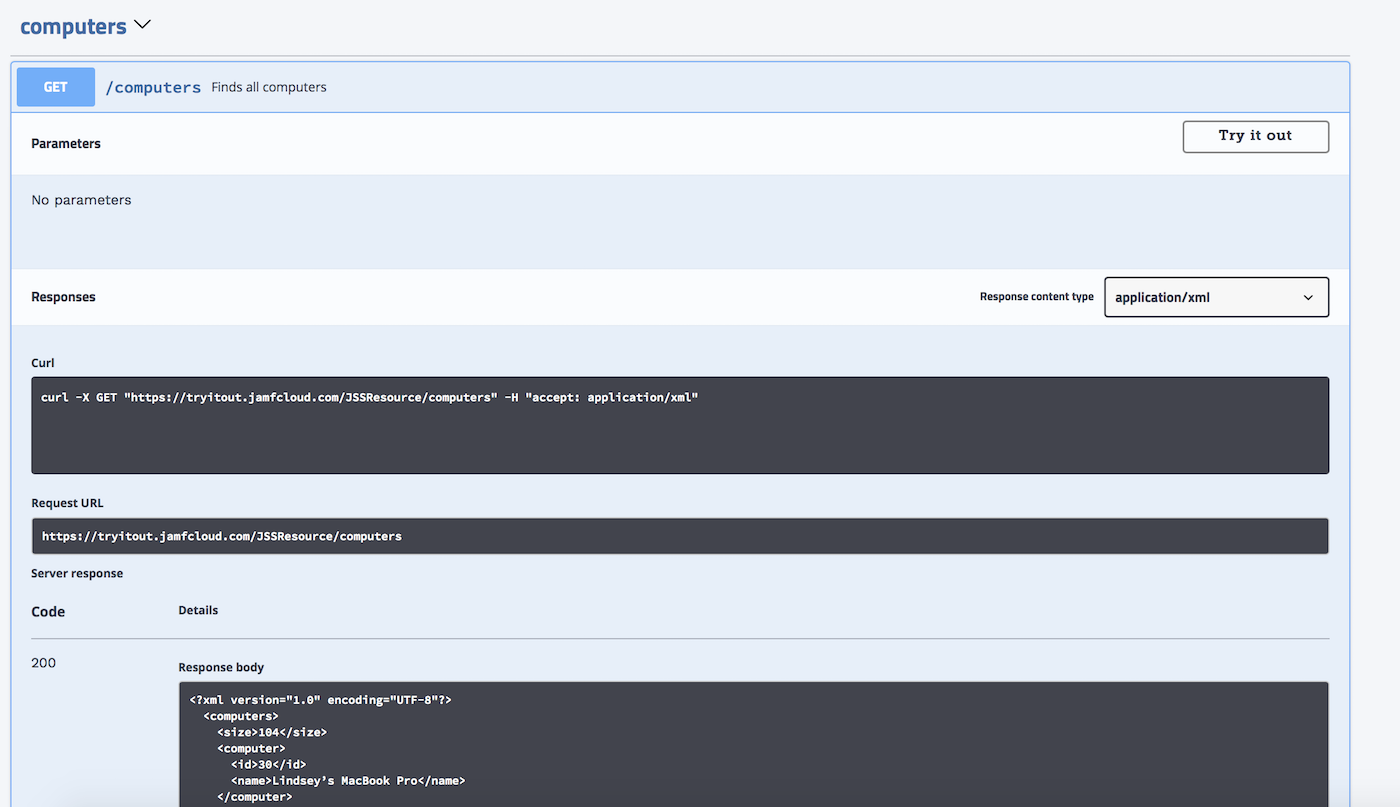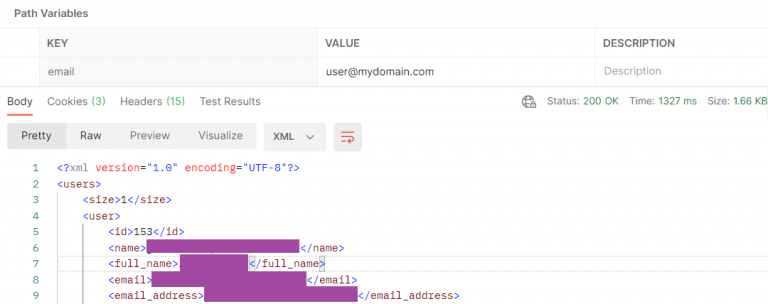

Responses to successful requests will include the ID of the updated resource.ĭELETE is used to remove the resource identified by the request-URI.
#Jamf pro classic api update#
In most cases PUT will only update the fields specified within the XML body and will leave values for fields not specified within the XML body as their previously defined values. PUT is used to update existing records, identified by the request-URI. To access the landing page, append '/api' to your Jamf Pro URL. You can access documentation for both the Jamf Pro API and the Classic API from the new API landing page. The base URL for the Jamf Pro API is /api.

Each endpoint supports a different array of subset values, which can be viewed by clicking the “Try it out” button for that specific endpoint within the API Reference page. The Jamf Pro API is open for user testing. Create a new Standard Account such as ‘APIAccess’ and set privileges to ‘Custom’. Documentation and Try it out features are built into each instance of Jamf Pro, and can be accessed at /api. Log into your JamF Pro instance and go to ‘Management Settings’ -> ‘System Settings’ -> ‘Jamf Pro User Accounts & Groups’. The base URL for the Classic API is located at /JSSResource on each Jamf Pro instance. When an XML body is required, Jamf recommends setting the path parameter, which tells the sever to return only certain subsets of information. The Classic API is primary tool for programmatic access to data within the system and to allow for integrations with other systems. Jamf will provide additional information at a later date. This will allow you to connect to your account, save your account information, and reuse that configuration next time you build a flow with the connector. The following items have been deprecated in this release: Basic authenticationJamf will discontinue support for Basic authentication in the Classic API in a future release of Jamf Pro (estimated removal date: August-December 2022) for enhanced security. When you add a Jamf Pro Classic API card to a flow for the first time, you'll be prompted to create a configuration. Most POST operations require that an XML body be passed with the request, however some endpoints support only path parameters. Authorize your Jamf Pro Classic API account. POST is used to create new objects or issue new actions. Thanks again to everyone who has provided feedback on this change.The Classic API is a RESTful interface that uses standard HTTP methods to issue requests and receive responses. We continue to evaluate all aspects of our APIs to ensure simple and secure programmatic access to the entire Jamf portfolio of products.
#Jamf pro classic api password#
Starting in Jamf Pro 10.36 you can disable this directly within the web interface by unchecking the "Allow Basic authentication in addition to Bearer Token authentication" checkbox in your Password Policy settings as outlined in the release notes ( ). We encourage customers not currently using the Classic API to disable basic auth as soon as possible to reduce the attack surface of their Jamf Pro instance. We know that a change like this causes additional work for customers and partners to update API workflows, but we believe this change is critical to improving the overall security posture of Jamf Pro. In most cases, the response body for inventory related events will not include all the information about a device that your application needs, therefore a subsequent API call may be necessary to fetch the complete data set.

Today, the Classic API is the main target for attackers executing brute force attacks to attempt to gain access to a Jamf Pro instance.īy using the same authorization mechanism as the newer Jamf Pro API, we're able to funnel all auth requests through a small number of endpoints that we can rate limit, without limiting every API request. This allows Jamf Pro to notify your application in realtime when a device has submitted new inventory data to Jamf Pro. The change in authorization mechanism in the Classic API was an effort to quickly mitigate the threat of brute force attacks against Jamf Pro instances. Tokens can be obtained from the Jamf Pro API using the /v1/. We received some great feedback from the community, and there were some questions around why we chose to make this change. Beginning in version 10.35.0 of Jamf Pro, the Classic API now accepts Bearer Token authentication.
#Jamf pro classic api code#
This documentation is maintained outside of the Jamf Pro code base and therefore is liable to include inaccuracies, especially as new versions of Jamf Pro are released. In Jamf Pro 10.35 we announced the deprecation of Basic authentication in the Classic API scheduled for a future release of Jamf Pro ( ). Classic-API-Swagger-Specification This swagger specification enhances Jamf Pro's built-in documentation for the Classic API by including object definitions, examples and responses.


 0 kommentar(er)
0 kommentar(er)
